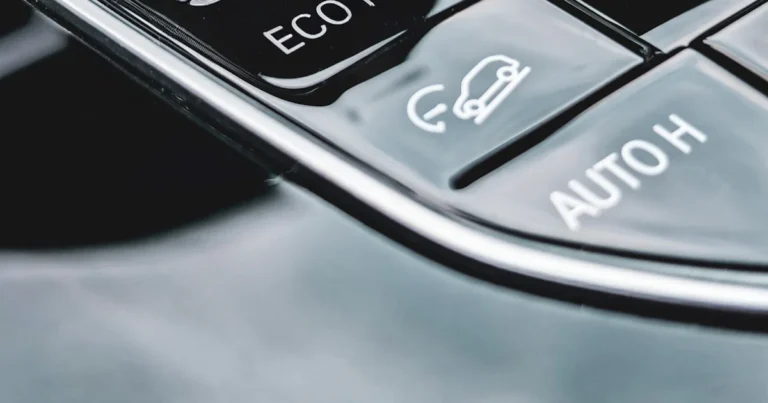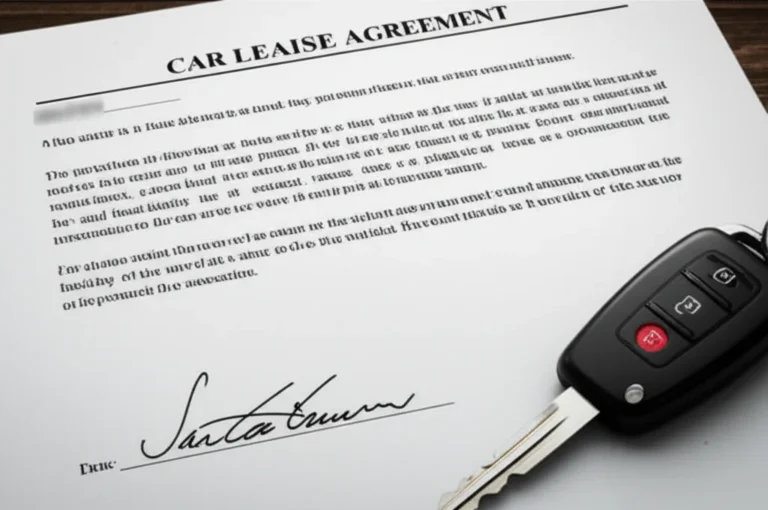Support our educational content for free when you purchase through links on our site. Learn more
Are There Hidden Fees in Car Lease Agreements? 12 Sneaky Charges Exposed! 🚗 (2025)
Leasing a car can feel like a dream come true—low monthly payments, driving a shiny new ride every few years, and skipping the headaches of long-term ownership. But wait… what’s that lurking in the fine print? Hidden fees in car lease agreements can turn your dream deal into a wallet-draining nightmare if you’re not prepared.
At Car Leases™, we’ve helped countless drivers dodge these sneaky charges. From acquisition fees disguised as “bank charges” to surprise mileage penalties and wear-and-tear bills that hit you when you least expect it, this article uncovers the 12 most common hidden fees you need to know. Plus, we share expert negotiation tips, real-life stories, and brand-specific insights to help you drive away with confidence—and keep your bank account happy.
Did you know that exceeding your mileage limit by just a few thousand miles can cost you nearly two grand at lease-end? Or that the “money factor” in your lease contract is just a sneaky way of hiding your interest rate? Keep reading to learn how to spot these pitfalls before you sign, and how to avoid costly surprises down the road.
Key Takeaways
- Hidden fees are common but mostly disclosed—knowing where to look is key.
- Acquisition, disposition, mileage overages, and wear-and-tear charges are the biggest culprits.
- Negotiating the vehicle’s selling price and money factor can save you hundreds.
- Pre-inspections and realistic mileage estimates help avoid end-of-lease penalties.
- Different brands have unique leasing quirks—know them before you sign.
- Avoid large down payments; roll fees into monthly payments for better protection.
Ready to lease smarter? Dive into our detailed guide and become the savvy lessee every dealer fears!
Table of Contents
- ⚡️ Quick Tips and Facts
- The Leasing Labyrinth: Unmasking the “Hidden” in Car Lease Agreements
- Why Do Car Lease Agreements Feel Like a Treasure Hunt for Fees?
- Decoding the Lease Contract: Your Pre-Flight Checklist for Financial Turbulence
- The Usual Suspects: Common “Hidden” Lease Fees You Will Encounter
- The “Welcome Aboard” Fee: Acquisition & Documentation Charges 📝
- The “Money Factor” Mystery: Unpacking Lease Interest Rates 💰
- Taxes, Taxes, Everywhere! Understanding Lease Sales Tax & Other Levies 💸
- The “Oops, You Drove Too Much!” Penalty: Mileage Overages 🛣️
- The “Wear and Tear” Woes: Excess Damage Charges 🤕
- The “See Ya Later” Surcharge: Disposition Fees 👋
- The “Breaking Up Is Hard To Do” Bill: Early Termination Penalties 💔
- The “Just In Case” Cash: Security Deposits & How They Work 🔒
- The “Optional, But Not Really” Add-Ons: Protection Plans & Extras ✨
- The “Dealer’s Discretion” Dilemma: Miscellaneous Administrative Fees ✍️
- The “Trade-In Trap”: Negative Equity Rolled Into Your Lease 📉
- The “Pre-Paid” Pitfall: Maintenance Packages & Hidden Costs 🔧
- Beyond the Basics: Less Common, But Equally Sneaky Lease Charges
- Navigating the Minefield: Expert Strategies to Avoid or Minimize Lease Fees
- Real-World Revelations: Anecdotes from the Car Leases™ Team 🚗💨
- Brand Spotlight: Lease Fee Insights from Toyota, Honda, Kia, and More 🌟
- Lease vs. Buy: A Quick Look at Long-Term Financial Implications 🆚
- Your Lease-End Game Plan: Preparing for a Smooth Return ✅
- Conclusion: Driving Away with Confidence 🏁
- Recommended Links: Your Road Map to Smart Leasing 🔗
- FAQ: Your Burning Lease Fee Questions Answered ❓
- Reference Links: Where We Get Our Intel 📚
Here is the main body content for your article, crafted by the experts at Car Leases™.
⚡️ Quick Tips and Facts
Welcome to the fast lane! Before we dive deep into the nitty-gritty of car lease agreements, here are some crucial takeaways to keep in your back pocket. Think of this as your cheat sheet to smart leasing.
- Focus on the Selling Price, Not Just the Monthly Payment: The single most important number to negotiate is the vehicle’s selling price (the “capitalized cost”). A lower selling price directly translates to a lower monthly payment. As the folks in a helpful video on lease negotiation put it, “You always want to concentrate on the selling price, dammit!”.
- “Zero Drive-Off” is Your Friend: We strongly advise against making a large down payment on a lease. If the car is totaled, your down payment vanishes. GAP insurance covers the lender, not you. It’s better to roll all upfront costs into your monthly payment.
- The “Money Factor” is Just Interest in Disguise: This tiny decimal in your contract is the lease’s interest rate. To convert it to a familiar APR, multiply the money factor by 2400. For example, a money factor of .00250 is equivalent to a 6% APR. Always ask if it has been marked up by the dealer.
- Fees Are Everywhere: Expect fees at the beginning (acquisition, documentation) and at the end (disposition, wear and tear) of your lease. Some are negotiable, many are not.
- Mileage Matters… A Lot: Leases come with strict mileage limits, often between 10,000 and 15,000 miles per year. Exceeding this limit can cost you dearly, with per-mile charges adding up quickly.
- Read. Every. Single. Word: We can’t stress this enough. Your lease agreement is a legally binding contract. Understanding every line item is your best defense against surprises. As South Shore Kia wisely notes, “Awareness is your best ally when it comes to navigating the nuanced terms of a car lease.”.
The Leasing Labyrinth: Unmasking the “Hidden” in Car Lease Agreements
So, you’ve seen those incredible ads, right? A stunning new car, maybe a sleek Audi or a rugged Ford F-150, for a monthly payment that seems too good to be true. And often, it is. Welcome, friend, to the leasing labyrinth! Here at Car Leases™, we’ve navigated this maze thousands of times, and we’re here to give you the map. The journey through Car Leases can be fantastic, offering lower monthly payments and the joy of a new car every few years. But lurking in the shadows of that fine print are the so-called “hidden fees.”
Now, are they truly hidden? Not exactly. Thanks to regulations like the Consumer Leasing Act of 1976, lenders have to disclose these charges. But let’s be honest, they’re often buried in jargon-filled paragraphs that could make a lawyer’s head spin. Our mission is to drag these fees into the daylight, explain what they are, and show you how to tackle them like a pro.
Why Do Car Lease Agreements Feel Like a Treasure Hunt for Fees?
You’re not imagining it. A lease agreement can feel less like a straightforward contract and more like a scavenger hunt where the prize is… not paying more than you have to. But why the complexity?
It boils down to the nature of a lease. You’re not buying the car; you’re essentially renting it for a long period. The leasing company owns the vehicle and is calculating your payment based on its predicted depreciation over the lease term. The fees are their way of covering costs and mitigating risks associated with:
- Setting up the loan (Acquisition/Admin fees)
- The risk of you returning the car in poor condition (Wear and Tear charges)
- The cost of processing and selling the car after you return it (Disposition fees)
- You driving the car more than agreed, causing it to depreciate faster (Mileage overages)
While some fees are unavoidable parts of the process, like taxes and registration, others are profit centers for the dealership or leasing company. Knowing which is which is the key to getting one of the Latest Car Lease Deals.
Decoding the Lease Contract: Your Pre-Flight Checklist for Financial Turbulence
Before you even think about signing on the dotted line, you need to do some reconnaissance. Think of yourself as a pilot performing a pre-flight check. You wouldn’t take off without knowing your instruments, right? Same goes for your lease.
The Fine Print: What to Scrutinize Before You Sign
Grab a magnifying glass (or just your reading glasses) and a highlighter. It’s time to become a temporary legal eagle.
- Capitalized Cost: This is the negotiated price of the car. Make sure it matches what you agreed upon.
- Capitalized Cost Reduction: This is your down payment, trade-in equity, or any rebates. Remember our tip: aim for this to be as close to zero as possible!
- Residual Value: This is the predicted value of the car at the end of the lease. It’s usually not negotiable, but it’s crucial for calculating your payment.
- Money Factor: Find this decimal. Do the math (multiply by 2400) to see your real interest rate.
- Lease Term & Mileage Allowance: Double-check the length of the lease (e.g., 36 months) and the annual mileage limit (e.g., 12,000 miles).
- Fee Glossary: Look for terms like “acquisition,” “disposition,” “documentation,” and “early termination.” Understand what each one means and the associated cost.
The Power of the Lease Calculator: Your Best Friend Against Hidden Costs
Don’t rely on the dealer’s math alone. Use an online lease calculator to verify the numbers. By plugging in the capitalized cost, residual value, money factor, and term, you can get an unbiased estimate of what your monthly payment should be. This is a powerful tool in your Auto Financing Options toolkit.
CHECK LEASE CALCULATORS on: Edmunds | U.S. News & World Report
The Usual Suspects: Common “Hidden” Lease Fees You Will Encounter
Alright, let’s line up the usual suspects. These are the 12 most common fees you’ll find in a lease agreement. Some are just the cost of doing business, while others are sneaky money-grabs.
1. The “Welcome Aboard” Fee: Acquisition & Documentation Charges 📝
Think of this as the cover charge for getting into the leasing club.
- ✅ Acquisition Fee: This is a fee charged by the leasing company (the bank) to set up the lease. It covers the administrative costs of processing your application and creating the account. It’s sometimes called a “bank fee” and is usually non-negotiable, though some dealers may try to mark it up. You can often choose to pay it upfront or roll it into your monthly payments.
- ❌ Documentation Fee (or “Doc Fee”): This is a fee the dealership charges for processing the paperwork. Unlike the acquisition fee, this one is pure dealer profit and can vary wildly. Some states cap doc fees, but in others, it’s the Wild West. Always question this fee and try to negotiate it down.
2. The “Money Factor” Mystery: Unpacking Lease Interest Rates 💰
This is one of the most misunderstood parts of a lease. The money factor is the interest rate, but it’s expressed as a tiny decimal (e.g., .00260) to make it look less intimidating. As one source points out, a money factor of .00260 is actually equivalent to a 6.24% interest rate, which can be a nasty surprise if you’re not careful. A good Credit Score and Car Leasing history will help you secure a lower money factor.
Pro Tip: Always ask for the “buy rate” money factor, which is the base rate from the lender. Dealers can mark this up for extra profit, so it’s a fair question to ask if they’ve added a margin.
3. Taxes, Taxes, Everywhere! Understanding Lease Sales Tax & Other Levies 💸
Ah, taxes. Unavoidable and ever-present. How sales tax is applied to a lease varies by state. Some states tax the total of your lease payments, some tax the monthly payment, and others tax the full capitalized cost of the vehicle. These are generally non-negotiable, but it’s crucial to understand how they’re calculated in your state so you can budget accordingly. You’ll also be on the hook for registration and license plate fees.
4. The “Oops, You Drove Too Much!” Penalty: Mileage Overages 🛣️
This is a big one. Your lease contract will specify a maximum number of miles you can drive per year, typically from 10,000 to 15,000. If you go over, you’ll pay a penalty for every extra mile, usually between 10 and 25 cents. It doesn’t sound like much, but it adds up fast! Driving 3,000 miles over your limit for three years at 20 cents a mile could cost you an extra $1,800.
Our Advice: Be realistic about your driving habits. If you have a long commute, it’s better to negotiate a higher mileage lease upfront than to pay the penalty at the end.
5. The “Wear and Tear” Woes: Excess Damage Charges 🤕
Leasing companies expect a normal amount of wear and tear. But what’s “normal”? That’s the million-dollar question. The guidelines can be subjective. A small door ding might be fine, but a large dent, scraped wheels, or stained upholstery will likely result in a bill. Some dealers are notorious for being overly critical at lease-end, turning minor imperfections into a profit center.
Prevention is Key: Keep your car clean and address minor scratches or dents before your lease-end inspection. Consider a pre-inspection so you have time to make repairs yourself, which is often cheaper than paying the dealer’s rate.
6. The “See Ya Later” Surcharge: Disposition Fees 👋
This is the “goodbye charge” for returning your car. The disposition fee covers the leasing company’s cost to clean, inspect, and prepare the vehicle for resale. It’s a fixed amount stated in your contract.
How to Avoid It: There’s often a get-out-of-jail-free card here. If you lease another vehicle from the same brand (e.g., trading in your leased Honda Civic for a new Accord), the manufacturer will often waive the disposition fee as a loyalty incentive.
7. The “Breaking Up Is Hard To Do” Bill: Early Termination Penalties 💔
Life happens. A job change, a growing family, or a move overseas might mean you need to end your lease early. Be warned: this is an expensive breakup. The penalties can be severe, sometimes requiring you to pay all remaining payments plus a fee. Before signing, make sure you’re comfortable with the lease term. If you think there’s a chance you’ll need to exit early, explore lease takeover services as an alternative.
8. The “Just In Case” Cash: Security Deposits & How They Work 🔒
Many leases require a refundable security deposit, similar to renting an apartment. This is the leasing company’s insurance against you defaulting or returning the car with excess damage. Assuming you fulfill the lease terms and the car is in good shape, you should get this money back. However, dealers have discretion and may try to deduct for wear and tear, so getting your full deposit back is not always guaranteed.
9. The “Optional, But Not Really” Add-Ons: Protection Plans & Extras ✨
When you’re in the finance office, you’ll likely be offered a menu of extras:
- Extended Warranties: As the video expert points out, this is generally pointless for a lease. Your car is covered by the manufacturer’s warranty for the typical 3-year/36,000-mile lease term.
- Wear and Tear Protection: This is insurance that covers excess damage at lease-end. It can be a good value if you’re hard on your cars, but read the fine print to see what’s actually covered.
- Tire and Wheel Protection: Covers damage to your tires and rims from road hazards.
- GAP Insurance: This is crucial and often included in the lease. It covers the “gap” between what you owe on the lease and what the car is worth if it’s stolen or totaled. Do not lease a car without it.
10. The “Dealer’s Discretion” Dilemma: Miscellaneous Administrative Fees ✍️
This is a catch-all for other small fees the dealer might try to tack on. These can include anything from “vehicle prep” fees to “etching” (anti-theft VIN etching on windows). Question every single line item. If it sounds bogus, it probably is.
11. The “Trade-In Trap”: Negative Equity Rolled Into Your Lease 📉
If you’re trading in a car you still owe money on, and the amount you owe is more than the car is worth, that’s called negative equity. Dealers will happily roll this negative equity into your new lease, which inflates your monthly payment. You’re essentially paying for your old car and your new car at the same time. Avoid this if at all possible.
12. The “Pre-Paid” Pitfall: Maintenance Packages & Hidden Costs 🔧
Some luxury brands like BMW and MINI include complimentary maintenance with their leases. For others, the dealer will try to sell you a pre-paid maintenance plan. While convenient, these plans can sometimes cost more than paying for the services (like oil changes and tire rotations) out-of-pocket. Do the math before you commit.
Beyond the Basics: Less Common, But Equally Sneaky Lease Charges
Just when you thought you had it all figured out, a few more curveballs can come your way.
The “Hand-Off” Hassle: Lease Transfer Fees
If you decide to use a lease-swapping service to get out of your contract early, the leasing company will charge a transfer fee to move the lease into someone else’s name. This is usually a few hundred dollars but is far cheaper than the early termination penalty.
The “Late Bloomer” Bill: Penalties for Missed Payments
This one is straightforward: if you miss a payment or are late, you’ll be hit with a late fee. These fees and any negative reporting can also impact your credit score, making it harder to lease in the future. Set up autopay to avoid this simple but costly mistake.
Navigating the Minefield: Expert Strategies to Avoid or Minimize Lease Fees
Knowledge is power. Now that you know what these fees are, let’s talk strategy. How do you fight back and keep more money in your wallet?
The Art of Negotiation: Haggling Your Way to a Better Lease Deal 🗣️
Here’s a table of what’s generally negotiable and what’s not:
| Negotiable (✅) | Generally Non-Negotiable (❌) |
|---|---|
| Vehicle Selling Price (Capitalized Cost) | Residual Value |
| Money Factor Markup | Acquisition Fee (from the bank) |
| Documentation (Doc) Fee | Sales Tax Rate |
| Trade-In Value | Registration & Title Fees |
| Optional Add-Ons (Warranties, etc.) | Disposition Fee (unless waived for loyalty) |
Your primary focus should always be on the selling price. Everything else flows from that number. While taxes and registration fees are set by the state, administrative or doc fees are set by the dealer and should be challenged.
Manufacturer vs. Dealership: Who’s Charging What on Your Lease? 🏢
It’s important to understand who’s behind each fee.
- The Manufacturer’s Leasing Arm (Toyota Financial Services, Honda Financial Services, etc.) sets the acquisition fee, residual value, and base money factor.
- The Dealership charges the doc fee, any dealer-installed add-ons, and can mark up the money factor and acquisition fee for extra profit.
Knowing this helps you direct your negotiation efforts. You can’t argue with Toyota about their acquisition fee, but you can absolutely argue with the dealer about their outrageous doc fee.
Lease-End Options: Buyout, Return, or Extend Your Lease? 🤔
At the end of your lease, you have choices, and one of them might help you avoid a fee.
- Return the Vehicle: This is the most common option. You’ll have the car inspected and will be responsible for any excess wear and tear, mileage overages, and the disposition fee.
- Buy the Vehicle: If you love the car, you can purchase it for the residual value stated in your contract. Doing this means you won’t have to worry about mileage, wear and tear, or the disposition fee.
- Lease a New Vehicle: As mentioned, staying loyal to the brand can often get your disposition fee waived.
Real-World Revelations: Anecdotes from the Car Leases™ Team 🚗💨
Let me tell you about my colleague, Dave. A few years back, he was leasing a sporty little number and got a fantastic monthly payment. He was thrilled! Fast forward three years, and he went to turn it in. The inspector came out with a clipboard and a grim look. A few curb rashes on the wheels he barely remembered, a small scratch on the rear bumper, and being 2,000 miles over his limit… BAM! He was hit with a bill for nearly two grand. He learned a valuable lesson that day: the “deal” isn’t over until you’ve successfully returned the keys. It’s why we now preach the gospel of the pre-inspection and being brutally honest about your driving habits before you sign.
Brand Spotlight: Lease Fee Insights from Toyota, Honda, Kia, and More 🌟
While most leasing companies follow the same general structure, there can be subtle differences between brands.
- Kia & Hyundai: Often feature attractive lease deals but be sure to read the fine print on their wear and tear policies. The South Shore Kia article highlights the importance of regular maintenance to avoid charges.
- Honda & Toyota: Known for their high residual values, which typically leads to lower monthly payments. Their leasing programs are generally straightforward and transparent.
- Luxury Brands (BMW, Mercedes-Benz, Audi): Often include complimentary maintenance, which is a great perk. However, their wear and tear standards can be very high, and replacement parts (like tires) can be expensive.
- Electric Vehicles: Leasing an EV, like a Tesla or a Ford Mustang Mach-E, can be a smart move due to rapidly changing battery technology. Check out our guide to Electric Vehicle Leases for more info.
👉 Shop for your next lease on:
- Kia: Edmunds | TrueCar | Kia Official Website
- Toyota: Edmunds | TrueCar | Toyota Official Website
- Honda: Edmunds | TrueCar | Honda Official Website
Lease vs. Buy: A Quick Look at Long-Term Financial Implications 🆚
Is leasing just a minefield of fees? Not at all! It’s about understanding the trade-offs.
| Leasing | Buying |
|---|---|
| Pros: Lower monthly payments, new car every few years, no long-term repair worries. | Pros: You own an asset, no mileage limits, freedom to customize. |
| Cons: You never own it, mileage restrictions, potential for fees at lease-end. | Cons: Higher monthly payments, responsible for all maintenance and repairs long-term. |
The fees we’ve discussed are unique to the leasing model. When you buy a car, you still pay taxes, registration, and doc fees, but you don’t have to worry about mileage penalties or wear and tear inspections. It’s a different set of financial considerations. For a deeper dive, check out our Car Lease Basics.
Your Lease-End Game Plan: Preparing for a Smooth Return ✅
Don’t wait until the last minute! Your lease-end process should start 90 days before the return date.
- Review Your Contract: Remind yourself of the mileage limit, disposition fee, and wear and tear guidelines.
- Schedule a Pre-Inspection: Most leasing companies offer a complimentary inspection about 60 days out. This will give you a detailed report of any potential charges for excess wear and tear.
- Get Repair Quotes: For any damage identified in the pre-inspection, get quotes from independent body shops. It’s almost always cheaper than letting the dealer do the repairs and bill you.
- Clean Your Car Thoroughly: A clean car makes a better impression. A professional detail can be a great investment and may help you avoid cleaning fees.
- Track Your Mileage: If you’re trending to go over your limit, try to adjust your driving habits in the final months. Combine trips or use an alternative mode of transport when possible.
Conclusion: Driving Away with Confidence 🏁

So, are there any hidden fees in car lease agreements? The short answer: Yes, but they’re not truly hidden if you know where to look. At Car Leases™, we’ve seen firsthand how these fees can sneak up on unsuspecting lessees, but armed with knowledge, you can steer clear of costly surprises.
From acquisition fees to wear and tear charges, each fee serves a purpose—some unavoidable, others negotiable. The key is reading your lease contract like a detective, asking the right questions, and using tools like lease calculators to verify the numbers. Remember Dave’s story? His costly end-of-lease inspection could have been avoided with a pre-inspection and honest mileage tracking.
Leasing can be an excellent way to drive a new car with lower monthly payments and fewer long-term headaches, especially with brands like Toyota, Honda, and Kia. Just be sure to factor in those fees and negotiate where you can.
In short: Don’t fear the fees—understand them, negotiate them, and plan for them. Then, enjoy the ride!
Recommended Links: Your Road Map to Smart Leasing 🔗
Ready to shop or compare? Here are some trusted platforms to find the best lease deals and learn more about your favorite brands:
-
Kia Lease Deals:
Edmunds Kia Lease Deals | TrueCar Kia Lease Deals | Kia Official Website -
Toyota Lease Deals:
Edmunds Toyota Lease Deals | TrueCar Toyota Lease Deals | Toyota Official Website -
Honda Lease Deals:
Edmunds Honda Lease Deals | TrueCar Honda Lease Deals | Honda Official Website -
Lease Calculators:
Edmunds Lease Calculator | U.S. News Lease Calculator
FAQ: Your Burning Lease Fee Questions Answered ❓

What are common hidden fees in car lease agreements?
Common fees include acquisition fees (a bank setup charge), documentation fees (dealer processing fees), disposition fees (charged at lease-end for vehicle resale preparation), mileage overage charges, wear and tear penalties, security deposits, and early termination fees. While some are standard and disclosed, others can be marked up or added unexpectedly if you’re not vigilant.
Read more about “🚗 Car Leases Uncovered: 15 Expert Secrets for 2025 Savings”
How can I avoid unexpected charges in a car lease?
- Read the entire contract carefully.
- Negotiate the vehicle’s selling price and money factor.
- Use a lease calculator to verify monthly payments.
- Be realistic about your mileage needs and negotiate higher limits if necessary.
- Maintain the vehicle well and get a pre-inspection before lease-end.
- Avoid large down payments that won’t be refunded if the car is totaled.
- Ask for a breakdown of all fees upfront.
Read more about “What Is the Lowest Term for a Car Lease? Discover the Shortest Options 🚗 (2025)”
Are there mileage limits that could lead to extra fees in a lease?
Yes. Most leases limit annual mileage to between 10,000 and 15,000 miles. Exceeding this limit results in per-mile penalties, often between 10 and 25 cents per mile. These charges can add up quickly, so it’s critical to estimate your driving habits accurately and negotiate accordingly.
Read more about “10 Surprising Benefits of Zero Down Car Leases in 2025 🚗”
What should I look for in the fine print of a car lease contract?
Look closely at:
- Capitalized cost (vehicle price)
- Money factor (interest rate)
- Residual value (car’s end-of-lease worth)
- Mileage allowance and penalties
- Acquisition, disposition, and documentation fees
- Wear and tear policies
- Early termination penalties
- Security deposit terms
Understanding these will help you avoid surprises.
Read more about “How Many Miles Per Year on a Hyundai Lease? 🚗 (2025 Guide)”
Do car leases include fees for wear and tear?
Yes. Leasing companies expect normal wear and tear but will charge for damage beyond that threshold. This can include dents, scratches, upholstery stains, and excessive tire wear. Policies vary by lessor, so get a copy of their wear and tear guidelines and consider a pre-inspection.
Read more about “Unlocking Hyundai Lease $99 Deals: 7 Must-Know Secrets for 2025 🚗”
How do acquisition and disposition fees affect the total cost of a lease?
The acquisition fee is a one-time charge to set up the lease, often around $500–$1,000, either paid upfront or rolled into monthly payments. The disposition fee is charged at lease-end to cover vehicle resale costs, usually $300–$600. Both add to your total lease cost and should be factored into your budget.
Read more about “How Much Does It Really Cost to Lease a Tesla Model 3? (2025) ⚡”
Can I negotiate hidden fees when signing a car lease agreement?
Yes and no. You can negotiate the vehicle’s selling price, dealer markup on the money factor, and sometimes the documentation fee. However, acquisition fees set by the leasing company and taxes are generally non-negotiable. Always ask for a detailed fee breakdown and challenge any fees that seem inflated.
Read more about “Can You Lease a Car and Not Buy It? The Ultimate Guide (2025) 🚗”
Reference Links: Where We Get Our Intel 📚
- Consumer Leasing Act of 1976 (Federal Reserve)
- HowStuffWorks: Hidden Costs & Extra Fees to Watch Out for When Leasing a Car
- Centennial Leasing & Sales: Understanding Hidden Fees in Car Leases
- South Shore Kia: Hidden Fees To Watch For In Your Kia Auto Lease
- Toyota Financial Services
- Honda Financial Services
- Kia Official Website
- Edmunds Lease Calculator
- TrueCar Lease Deals
We hope this guide empowers you to lease smarter and drive happier. Remember, the road to a great lease deal is paved with knowledge and a keen eye for details! 🚗💨





